How To Choose The Right Room Padlock For Travel (in-depth guide)
.jpeg)
If you’ve already read our article on how to prevent room theft while travelling, you should fully understand the importance of carrying your own room padlock when travelling.
If you didn't read that article, the reason you need to carry your own padlock is that many guesthouses and hotels have padlock-secured rooms and you can't really trust a padlock that's provided to you the receptionist.
This is because the hotel itself probably has a spare key for the padlock, previous guests may have made copies of the padlock key and the lock itself might not be very reliable.
In other words, you can't be sure that you're the only person that has the means to open that padlock.
The trouble is, when you start looking into purchasing a room padlock for travel, the task of choosing one can be completely overwhelming. There are so many different designs, shapes, sizes, materials and other variables, which make the entire matter so confusing.
And what exactly should you be looking for in a padlock that's suitable for travel? The requirements for a travel padlock are different to those for a padlock designed for securing a warehouse or a garden shed for example.
Don’t worry, we’ve got you covered with this article. We'll discuss all the factors that you need to consider when choosing the right padlock for travelling with and by the end of the article, our aim is that you’ll be well enough informed to be able to choose a padlock on your own.
The basic elements of a padlock
Before we look at all the factors you need to consider when choosing a padlock, it’s important that you understand the basic elements that comprise a typical padlock and the terminology that goes with them.
Check out the diagram below to get a very basic idea of the beast you’re dealing with here:
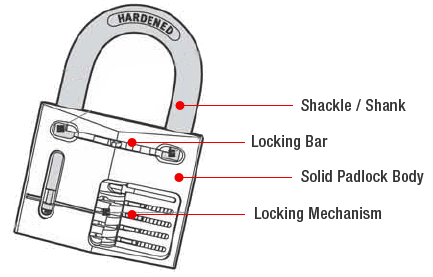
The body: The body or housing is the part of the padlock that houses the locking mechanism and the two ends of the shackle.
The shackle: The shackle or shank is the straight or curved metal bar that is passed through the staple, loop, chain or other lock fixing, before engaging the lock. We prefer the term 'shackle' as the term 'shank' also refers to an improvised prison knife.
The locking bar: Hidden inside the body of the padlock, the locking bar usually fits into a notch in the base of each end of the shackle. The bar must rotate or move in some way to release the shackle and allow the lock to open.
The locking mechanism: The locking mechanism is hidden inside the body of the padlock, to protect it from attack.
The two main categories of padlocks
Padlocks can be conveniently divided into two broad categories; ones that use a key to open the lock (key-opening padlocks) and ones that use a combinationof numbers (combination padlocks). We'll take a look at key-opening padlocks first.
Key-Opening Padlocks

Key-opening padlocks use a key with teeth, side-dimples or notches, as opposed to a combination of numbers to open the lock. They are used in a wide variety of applications in the world today and are the preferred type of padlock for high security applications.
As compared to combination locks, their major disadvantage is that they require a key, which can get lost (and later found by the wrong person), stolen, copied or duplicated by potential thieves.
There are many factors you have to consider when deciding on which key-opening padlock to purchase.
The 11 most important factors are:
1. Padlock type
2. Locking mechanism
3. Size & weight
4. Body material
5. Shackle details
6. Key details
7. Pin details
8. Security features
9. Fixings & surroundings
10. Security Rating
11. Price
1. Padlock type
There are several 'types' or designs of key-opening padlocks. The most well known types are conventional padlocks (with U-shaped shackle), disc (discus) padlocks, shutter padlocks, & hockey puck padlocks.
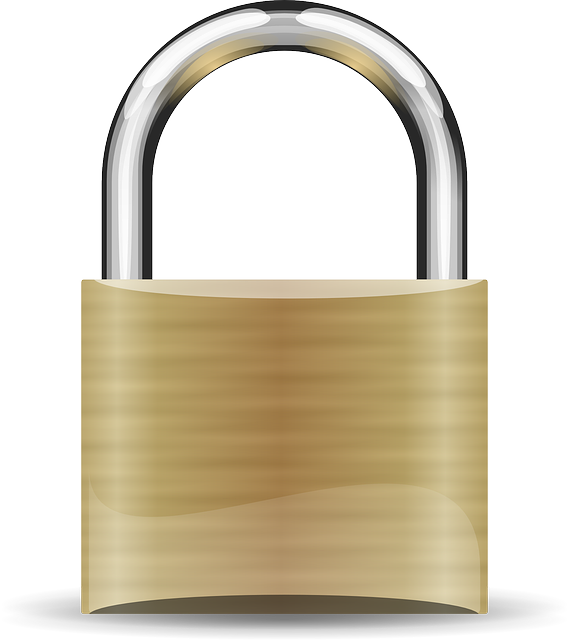
Conventional padlocks are the most commonly seen type of padlock, distinguished mainly by the spring-loaded, U-shaped shackle.
Conventional padlocks come in a variety of shackle types and materials. We’ll discuss some of these finer points later on.
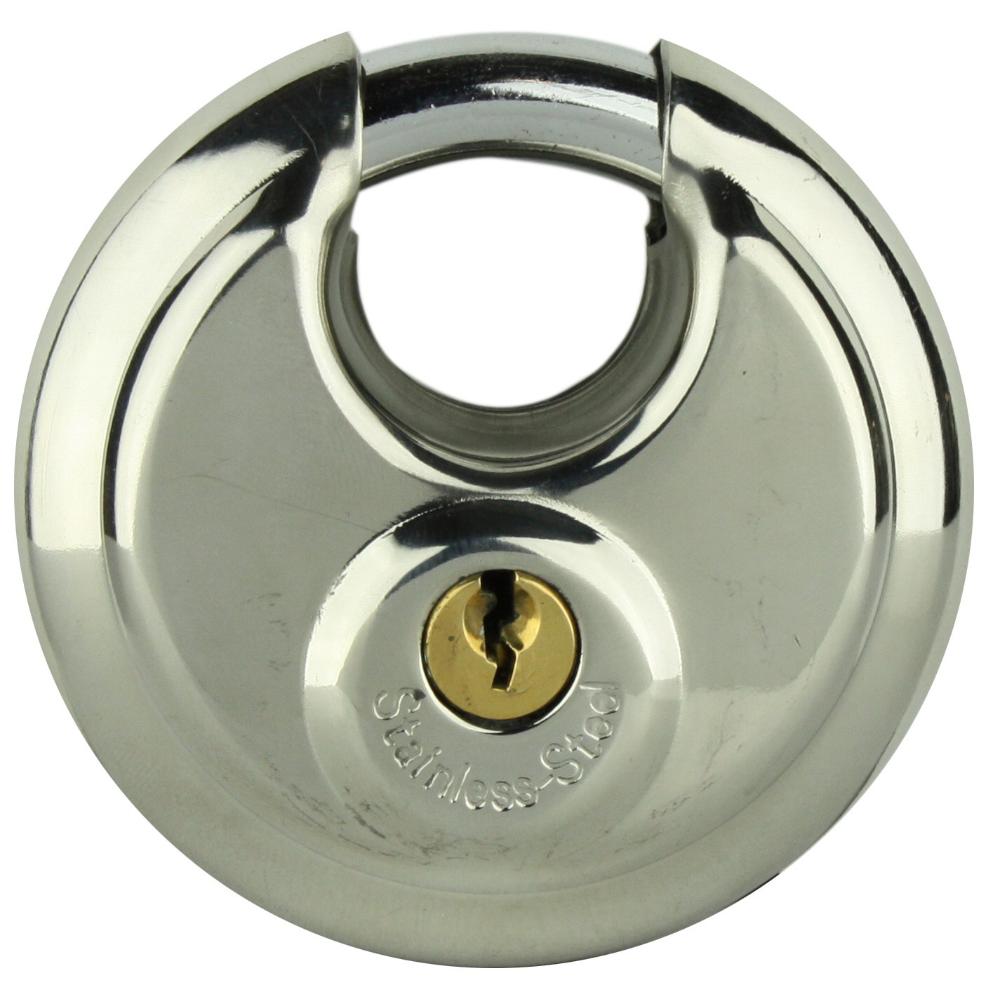
Disc padlocks are popular for securing doors, bicycles chains/cables and public storage areas. Many consider them to be the industry standard.
As the name suggests, they’re shaped like a disc, with a curved shackle that runs around the entire circumference, enclosed by two opposing metal cases that are welded together. The shackle in disc padlocks is not spring-loaded like in conventional padlocks.
Disc padlocks were originally designed to be used with a hasp and staple fixing. With the correct set up, the exposed part of the shackle is completely covered by the staple, making it impossible to access the shackle with cutting tools.
Despite the protection they afford to the shackle, disc padlocks do have shallow keyholes and are therefore vulnerable to picking or drilling out of the locking mechanism.
Also, a lot of budget disc padlocks are now flooding the marketplace and these are a lot less secure than the original design. These cheaper disc locks can be busted open with a hammer by striking on the seam where the two halves are joined.

Shutter padlocks, also known as anvil padlocks or straight shackle padlocks, are typically used to secure the rolling shutters that cover storefronts outside business hours.
They also work excellently in a variety of other applications like securing chains, cables, hasp & staple door-locks etc.
As with disc padlocks, shutter padlocks only leave a small amount of the shackle exposed, which usually gets covered when the lock is passed through the staple or chain-links. Due to the closed-shackle design, they offer a higher level of security than many other types of padlocks.
However, as with many other locks, the keyhole is still a vulnerable area and the lock may fall prey to lock-picking or drill attacks.
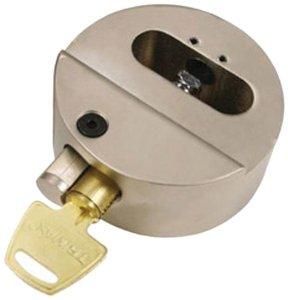
Hockey Puck Padlocks, also known as hidden shackle padlocks, take the concept of protecting the shackle to the next level. A person unfamiliar with this design may not even realize they were looking at a padlock.
Because of the way the hockey puck padlock is designed, the shackle is hidden from plain view and is extremely difficult to access when the padlock is locked, making this arguably the best design for protecting the shackle from cutting tools and pry bars.
Considerations for travel
The truth is that all the designs mentioned here can vary greatly in terms of how much security they provide and there is no padlock type that is best suited to travel. You have to look beyond the design and consider some of the finer details of the individual padlock, which we'll look at next.
2. Locking Mechanism
There are a variety of different types of locking mechanism found in key-opening padlocks. Some of the mechanisms we’ll mention here are almost obsolete or out of production nowadays but it’s no harm if you know a little about them anyway. You might also encounter older padlocks lying around that use these mechanisms.
By far the most common locking mechanism used in today’s padlocks is the pin-tumbler mechanism. Most locks use this mechanism or a variation of this mechanism. If there were only one locking mechanism that you should try to understand the workings of, it would be this one.
Pin-tumbler mechanism –This mechanism uses a series of two-part metal pins (usually 3-7 main pins), to prevent the 'plug' from turning. Each main pin is spring-loaded and consists of an upper ‘driver pin’ and a lower ‘key pin’. When the correct key is inserted, the gaps between every key pin and driver pin are aligned with an imaginary line known as the ‘shear line’, which marks the boundary between the plug and the outer shell.
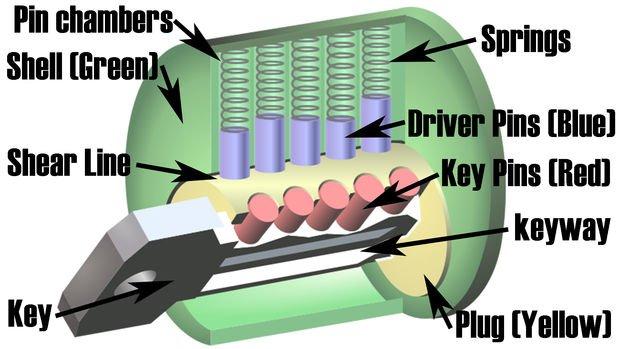
Variations on the pin-tumbler mechanism
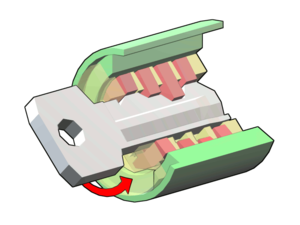
Wafer-tumbler –These work on a similar principle to the pin-tumbler lock. Instead of round spring-loaded pins, they use ‘wafers’, which are attached to springs.
The idea is that only if you insert the correct key will none of the wafers protrude out of the plug and stop the plug from turning within the shell housing.
There are single-sided wafer locks, where all the wafers protrude only on one side of the plug and then there are double-sided wafer locks where the wafers protrude on opposing sides of the plug; the latter use alternating springs and are opened using a double-sided key.
Wafer-tumbler locks are often found in dirty or high-use environments because of their resistance to debris and contamination.
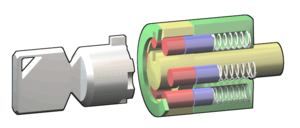
Tubular Pin-Tumbler - Similar to a pin-tumbler lock but the pins are arranged in a circular pattern and the key pins are pushed in horizontally, not vertically.
The key is tubular and hollow with small notches cut around to the circumference, which correspond to the individual pins. This locking mechanism is often seen in vending machines.
.jpg)
Dimple pin-tumbler – These work on the same principle as a pin-tumbler with some minor differences.
The pins are not set into position by teeth on the edges of the key but rather the sides of key are dimpled or pockmarked with shallow holes and these dimples set the pins into the correct position via a wedge type mechanism.
Due to the narrow keyway, this mechanism is very difficult to pick but it's still vulnerable to other tactics like bump-keying and impressioning.
Non pin-tumbler mechanisms
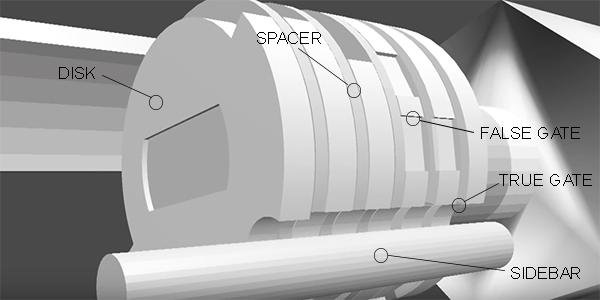
Disc-detainer – This is a completely different mechanism that uses a series of discs instead of pins. You'll find it in some 'Abus' locks.
Each disc has a small notch (called a true gate) and when all the notches are aligned by the key, a sidebar (that had previously prevented rotation) drops down from the housing into the notches and the plug can then rotate freely. These locks are extremely difficult to pick and only a minuscule percentage of the population has the expertise. It's one of the most secure locking mechanisms to go with.
Considerations for travel
All the locking mechanisms here can be picked by a skilled thief, although the disc detainer locking mechanism tends to be considerably more difficult to pick than any the others.
However, most thieves use brute force methods to bypass locks as opposed to methods requiring finesse, so this factor is perhaps less important than some of the other factors listed below.
3. Size & Weight

In padlocks, size matters when it comes to security. Bigger padlocks with beefier bodies and thicker shackles are physically stronger and harder to defeat with brute force methods.
However, added size is pointless if the lock has a cheaply made cylinder or the whole thing is made from weak materials. A lock should be equally strong throughout; a chain is only as strong as it’s weakest link.
A big problem with very large padlocks is that they’re bulky and heavy to for travellers to carry. It's best therefore to choose a padlock made from materials with a high strength-to-weight ratio and that way you can reduce the size and weight of the padlock while retaining an acceptable level of strength and security.
Considerations for travel
A big problem with very large padlocks is that they’re bulky and heavy to for travellers to carry. It would be nice to have the extra security provided by a bigger padlock though.
It's best therefore to choose a padlock with parts made from materials with a high strength-to-weight ratio and that way you can reduce the size and weight of the padlock while retaining an acceptable level of strength and security.
4. Body Material
The body of a padlock is there to protect the internal locking mechanism from attack. The bodies of most padlocks are made to be as solid as possible, although cavities must be machined out of the metal to allow space for the locking mechanism and channels to hold the covered parts of shackle.
A variety of materials are used in padlock bodies, which vary greatly in terms of hardness, strength and weather resistance. They are:
.jpg)
Pressed Steel – The material typically used in disc locks. Two heavy-duty stainless steel shells are pressed together and then welded together along the entire circumference.

Solid Brass – Brass is a soft metal and easy to machine, so brass padlocks are usually very cheap to purchase.
However, as a body material, it’s not very strong and can be easily drilled or cut through. Many of the cheaper brass padlocks also have sharp corners, which can scratch things or can be uncomfortable to handle but more expensive ones have softer, rounded edges.

Laminated Steel – Thin steel plates that have been pre-punched with holes are stacked and then riveted together to form this type of body. The rivets are a major weak point in the design. Like the solid brass-bodied padlocks, these are also cheaply made.

Armour Encased Brass – Since brass is pretty weak on its own, some padlocks encase the brass body in an outer layer of hardened steel for extra reinforcement and better protection against drilling attacks and cutting attacks.
Solid Steel Alloy - This body type is very strong and typically it’ll undergo a hardening procedure to make it more resilient against attacks.
Because of the hardness of the material, machining out the internal cavities is more laborious and expensive so these padlocks carry a higher price tag as a result.
Considerations for travel
If you can afford it, go for a body material with a high strength-to-weight ratio. This will afford you great strength and resistance to brute-force attacks, while allowing you carry a smaller padlock that doesn't weigh too much.
The bodies of some ABUS locks are made from strong but very lightweight alloys like aluminium alloy or titanium alloy and are the clear winners here.
5. Shackle details
The shackle can often be one of the most vulnerable parts of a padlock. In better quality padlocks, the shackle will be secured two points (as opposed to one) within the lock body whenever the padlock is locked. Other factors that you must consider when looking at the shackle are the type of shackle, the shackle material and the shackle thickness.
Shackle Type
There are a few different types of shackle that you'll find in padlocks. This is a critical factor to pay attention to when choosing a lock as the level of security offered by each type of shackle differs greatly. There are closed shackles, open shackles, long shackles, adjustable shackles and hidden shackles.
Closed-shackle - These shackles incorporate ‘shoulders’ or 'shrouds' - protective metal covers that reduce the amount of the shackle that’s exposed.
This is one of the most secure types of shackle as it makes it more difficult for thieves to get at the shackle with a cutting tool.
However, they can be difficult to use with chains or with some other lock fixings, although many of them overcome this difficulty by having a ‘removable shackle’, which can be completely detached from the body before locking.
.png)
Open shackle - The typical brass padlocks you see everywhere are a good example the open shackle style. This type of shackle is easier to use with many applications.
However, the shackle is not well protected from lever attacks (pry-bar) or cutting tools (bolt cutters, battery-powered dremel tools etc.).
Many of these locks can also be opened by simultaneously pulling upwards on the shackle and tapping the side of the lock with a hammer. Open shackle padlocks are not a very secure design and they are sold very cheaply as a result.
Long shackle - You’ve probably seen those padlocks with super long shackles. Long shackles are useful for certain applications like when you have to thread the shackle through multiple staples or through two handles that are spaced widely apart. However, a long shackle is very vulnerable to lever attacks and cutting tools.

Adjustable shackle - As the name implies, adjustable shackles can be varied in length to suit the application. They're a sort of hybrid between the open-shackle style and the long-shackle style.

Hidden shackle - You'll mainly find hidden shackles in hockey puck padlocks. The shackle is hidden at the back of the of the padlock inside a small slot. A very secure design if you're worried about brute force attacks because the shackle is virtually impossible to get at when the lock is set.
Shackle Material
Shackles can be made a few different materials. This is a very important consideration when choosing a padlock as weaker shackle materials can be easily cut through with bolt cutters or busted open with a pry bar. The main materials you’ll encounter in shackles are:
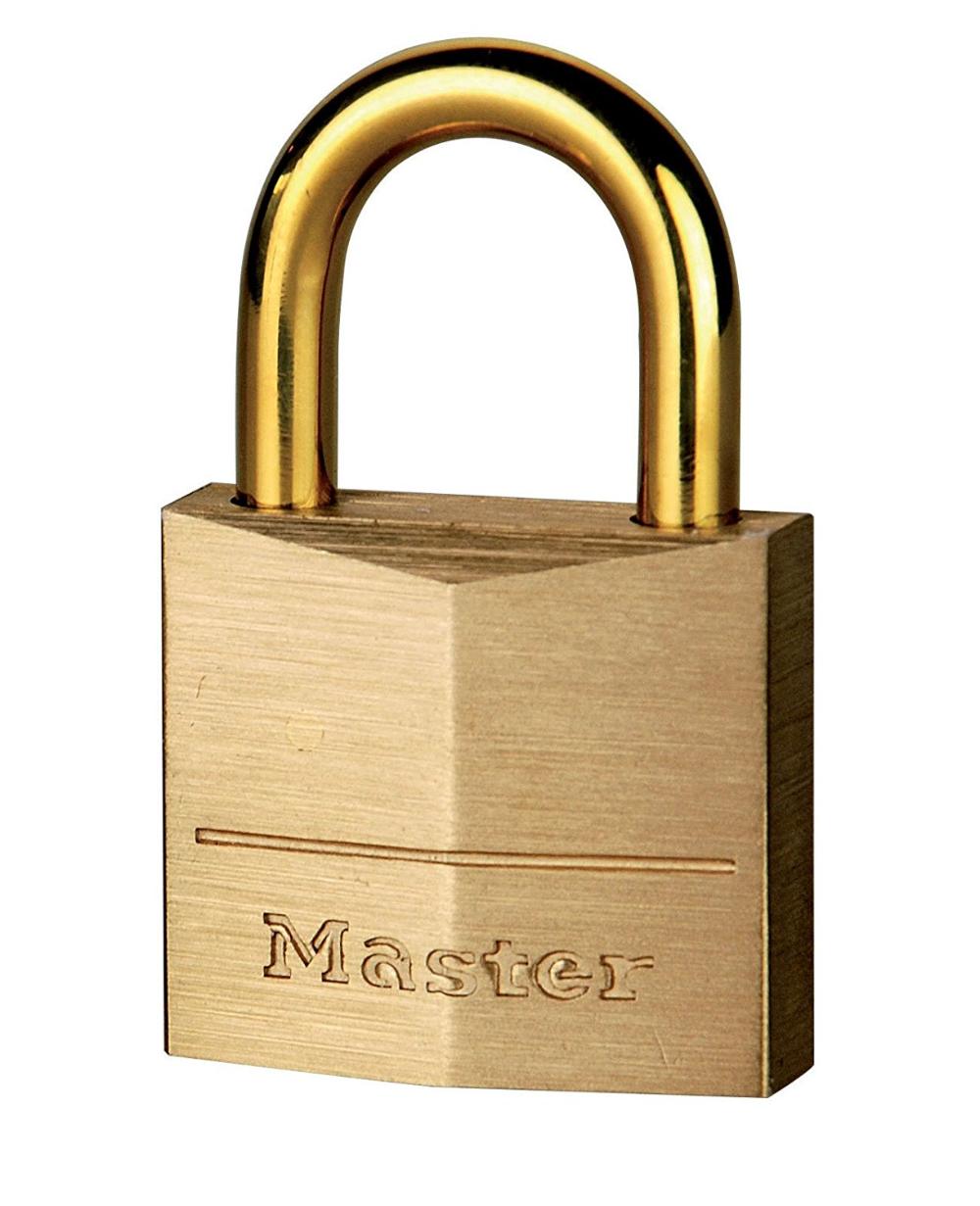
Brass - One of the weakest shackle materials and mainly used in cheap, low quality padlocks. Very easy to cut through or lever apart with a pry bar.

Stainless steel – Locks with stainless steel shackles are usually designed for outdoor use because stainless steel is corrosion resistant. However, as a shackle material it’s one of the weaker options so it’s not recommended.

Hardened steel – Look at any general purpose padlock and you’ll probably find the word ‘hardened’ engraved into it. The steel undergoes a special heat treatment to create a superficial hardened outer layer (case hardening).
Hardened steel shackles often have a shiny chrome-plated finish to help them resist corrosion. The hardened steel casing is supposed to help defend against cutting tools but battery-powered Dremel tools can still cut through these like butter.

Hardened Boron steel alloy – An alloy made by adding small amounts of boron to the steel. The steel alloy is then hardened through several heat treatments, leaving a hard outer case and a hard inner core. When more security is needed, this is a great choice as it’s much stronger than hardened steel.

Boron Carbide – This extremely hard ceramic is often used to make cut-resistant shackles. The material is also used in making armor. This is one of the best and strongest materials used in padlock shackles.

Molybdenum steel alloy – This is the strongest padlock shackle material. It’s also extremely corrosion resistant. However, it’s superiority is reflected in the higher price commanded by padlocks fitted with this type of shackle.
Shackle Thickness
The shackle thickness is obviously another important factor when it comes to resistance against cutting tools, pry bars, blowtorches and other attacks the lock may be subjected to.
Generally, the thickness of the shackle scales proportionally with the size of the lock so if you know what shackle thickness you need, you’ll see quickly what size the lock is going to be.
As a general guideline, ensure that the shackle of your lock is at least 7-9mm thick for a medium level of security and more than 10mm in thickness if you want a high level of security.
You should also bear in mind the shackle material and strength of the surroundings and lock fixings when deciding on the thickness. To reduce size and weight, you could lean towards the lower end of the thickness scale if your shackle is made from one of the stronger materials.
Shackle Shape

Most padlock shackles you’ll encounter will be round in cross-section. You may also come across hexagonal shackles.
Hexagonal shackles are supposed to be harder to get a hold of with a pair of bolt cutters but in practice, the edges that are presented by hexagonal shackles may get caught in a nick on the blade of the bolt cutters, making it even easier to get a good grip.
Considerations for travel
When it comes to travelling, the stronger shackle materials like hardened boron steel alloy, boron carbide or molybdenum steel alloy will serve you best.
Because these shackle materials are so strong, you can choose a slightly thinner shackle diameter and smaller overall padlock size to reduce the weight, without while still offering some resistance against attacks from bolt-cutters or battery-powered dremel tools.
Remember also, you may need to be able to thread the shackle through the fixings on hostel lockers or through the hasp & staple fixing on the door to your room. Go too thick and it may not fit. Here's a useful guideline:
High Security: 10mm or more in diameter
Medium Security: 8-10 mm in diameter
Low Security: Less than 7mm in diameter
A diameter of 10mm is somewhere around the sweet spot for a travel padlock.
6. Key Details
When choosing a padlock, you should give some thought to the key. Variables such as the key size and key profile can give you vital clues about how secure the lock will be. The type of keying used for the lock you're interested in is also an important consideration.
Key Size

A longer key with a greater number of teeth or cuts indicates a deeper keyway with a greater number of pins inside it.
Very short keys may suggest only 3 or 4 internal pins, while longer keys may suggest 5, 6 or even 7 pins.
More pins means better security so pay attention to the length of the key and the number of notches in it.
A longer key with a greater number of notches or cuts indicates a deeper cylinder with a higher number of pins inside it. Note that the pins sit within the troughs and indentations along the key edge while the key is engaged. More pins in the lock means better security so pay attention to this.
Key Profile
.jpg)
This refers to the shape of the key when viewed from the end. The key profile matches the profile of the keyway and the profile of the keyway can greatly influence how easy or difficult it is for a thief to pick the lock.
The classic key has an S-shaped profile but the keyway for this type profile is usually quite large and provides ample space for a thief to get in with a lock-picking tool.
More complex or narrow, constricted profiles will give better security but may come at a higher price.
Keying Types
Keyed-alike – Some sets of locks are ‘keyed-alike’, so that one key can open all the locks within the set. The number of locks in each set can vary greatly and each set uses a different key.
Keyed-to-differ – This is a safer option than keyed-alike. For a batch of say, a thousand locks, the manufacturer may create 200 unique key patterns. This means that only 1 out of every 200 locks purchased will have the same key. It’s somewhat unlikely then in that particular scenario that somebody else who buys the same lock model as you will have a copy of your key.
Master-keyed - Sets of master-keyed locks are keyed-to-differ but the set also comes with an overriding master key that will open all the locks. You won't don’t need to worry about this if you’re buying a single padlock.
Restricted keyway- With restricted keyway locks, keys can’t be copied without the express permission of the owner. If you lend the keys to someone or lose the key, you don’t have to worry about duplicate keys being made and being passed around into the wrong hands.
7. Pin details
If you’re choosing a padlock that uses the pin-tumbler mechanism or some variant thereof, you will want to pay at least some attention to the details regarding the pins, especially the number of pins, pin material and whether any security pins are present.
Number Of Pins
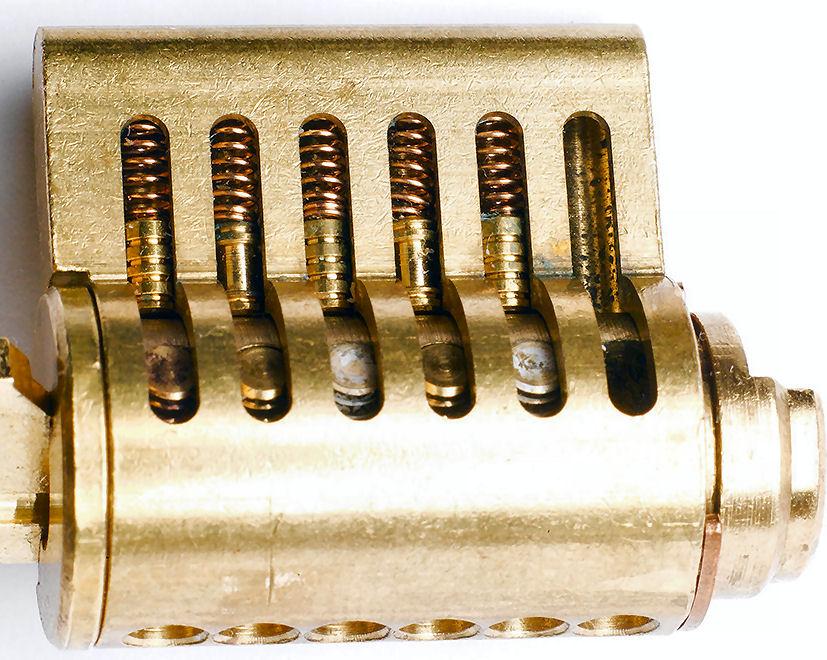
The number of pins used in the locking mechanism is an important consideration. More pins are more time-consuming to pick and will take more time to drill through.
Some cheap locks found on furniture like cupboards and wardrobes might use only 1 or 2 pins but when you’re buying a padlock, you want to see a minimum of 4-5 pins, with 6-7 pins being even better. In fact, 90% of padlocks have 5 pins. Looking at the number of notches on the key or on the box that the padlock comes in should help you to figure out how many pins there are inside the plug.
A normal 4-pin lock theoretically can produce over 2,000 unique key patterns but in practice, many cheap 4-pin locks are only made with 10 or 20 unique key patterns. This means that if somebody else purchases the same lock as you, there could be a 1 in 10 chance that they will have a copy of the key to your lock. Beware therefore of cheap lock brands!
6-pin or 7-pin locks are a much safer bet, being able to produce millions of unique key patterns, although in practice, most manufacturers probably limit the number to several hundred thousand.
Pin Material
Look for stainless steel or hardened steel pins in a padlock. These will offer more resistance and deflect a drill bit better than softer pin materials such as brass.
Security Pins

These are special types of pins included in some locking mechanisms to thwart attempts to the pick the lock open. There are many kinds of security pins such as spool pins, mushroom pins, serrated pins etc.
Because of their shape, these pins get snagged and can’t be pushed upwards to set them in place when a lock-picker is applying turning pressure to the lock. If the lock you’re choosing features security pins, all the better as these will defeat most amateur lockpickers.
8. Lock Fixings & Surroundings
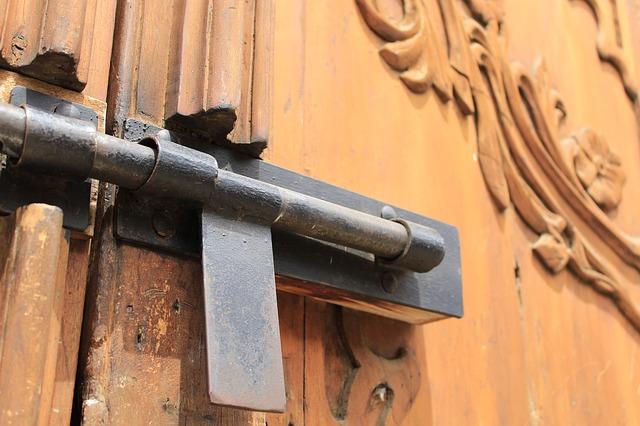
It doesn’t matter how strong your padlock is if it’s used with a weak hasp, staple or chain. A thief will just ignore the padlock and attack the lock fixings in such a scenario.
Likewise, if the padlock has weak surroundings like a flimsy door, thin walls or weak hinges, its extra strength won’t really matter because burglars always look for the easiest method of entry. A padlock should therefore always be calibrated to the strength of the lock fixings and the surroundings.
Considerations for travel
When you're travelling, you won't always be staying in rooms with incredibly strong doors or walls and you won't normally have heavy-duty lock fixings to use with the padlock either, so it's pretty pointless to go overboard and choose a heavy-duty padlock designed for an industrial warehouse. In that case the hinges of the door will probably yield to a thieves kicks before the padlock does.
9. Weather Protection

This is mainly a concern if the padlock will be seeing a lot of outdoor use and will be exposed to the elements.
The steel springs and keys of some padlocks can be prone to rusting in outdoor scenarios.
Considerations for travel
When you’re travelling, it’s probably safe to say that the padlock will see a mixture of outdoor and indoor use, so it might not be a bad idea to choose a padlock that promises at least some level of weather resistance. While travelling we have personally seen cheap padlocks we've owned become so badly rusted that they ceased to function.
10. Security Features
We already mentioned security pins but there are many other special security features that are present in high security locks. Look out for features like anti-drill plates & sidebars. The more features like this the better.

Anti-drill plates – Some manufacturers include these hardened steel plates over the base of the lock. They often feature a rotating metal disc in the immediate area around the keyhole. They’re mainly designed to protect against drill attacks

Sidebars - For additional security, some locks feature a sidebar (thin metal bar) or side pins along the side of the cylinder, which prevent the plug from rotating unless the correct key is inserted. Sidebars make it more difficult to drill out the lock because even if you drill out the pins, the sidebar will still be engaged, stopping the plug from turning.
These are only the tip of the iceberg regarding the types of special security features that high-security locks incorporate to thwart would be thieves. As thieves continually get smarter and better at figuring out how to pick locks, you can't really have too many security features.
11. Security Rating

Many lock manufacturers have their own system for comparing the relative security level between all the locks that they manufacture. Some might rate their padlocks for security on a scale from 1-10 or 1-20 or whatever.
These ratings however aren’t standardized so there’s no way to compare the security level of two locks from different manufacturers; for example, a security rating of 15 on one manufacturer's scale might be the same as a rating of 3 on another's.
When dealing with higher security locks, there are two reliable industry standards that can tell you something about how secure the lock is:

CEN Rating – This is the European standard, running from CEN 1 to CEN 6, with 1 being the 'low security' rating and 6 being the 'maximum security' rating. The lock is subjected to various physical attacks to determine the security rating.

‘’Sold Secure’’ - This system has a three-tier rating system and gives padlocks either a gold, silver or bronze security rating, with gold being the highest. Again, the severity of the physical attacks the padlocks can withstand determines their rating.
12. Price - How much should you pay for a travel padlock?
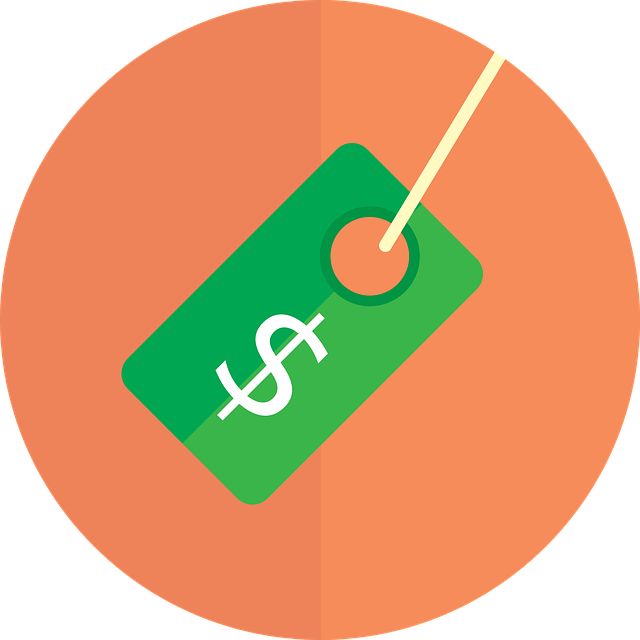
The amount of money you pay for a padlock should be calibrated with the net value of the items you’re securing. There’s no point in spending $1,000 dollars on a padlock if you’re using it to secure $100 worth of stuff. In that case, it’s the padlock itself that you’d want to be securing, not the stuff in the room!
If you travel with electronics like laptops, cameras and smartphones, it’s very possible that the net worth of all the valuables you travel with is in excess of $2,000. That’s quite a lot of money right there. In that case, it makes sense to spend at least $50 on a decent quality padlock that’ll keep your valuables safe.
However, if you travel with very few electronics or things of value, a run-of-the-mill padlock in the $10-20 range should do the job just fine.
Any padlocks that you see in hardware stores for under $5 or less are about as effective as the price would suggest; not at all. You’d almost be just as well off without a padlock as you’d be travelling with one of these.
Combination Padlocks
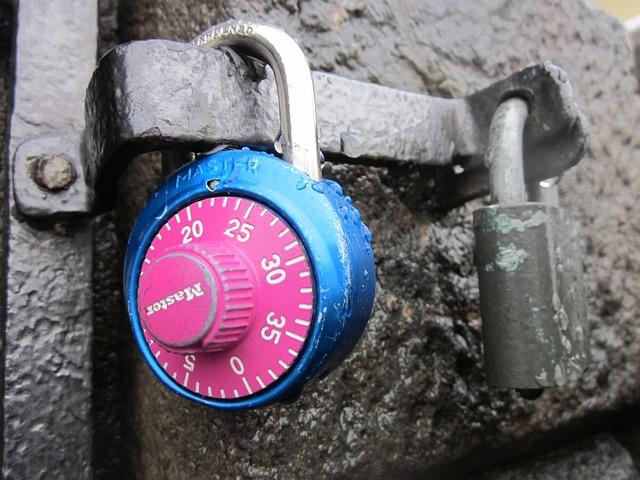
Combination padlocks are the type that can only be unlocked by entering a specific combination of numbers, usually 3 or 4 numbers.
Most combination locks are inherently less secure than their key-opening counterparts. This is partly due to the inherent mechanical weakness that comes with the design of combination locks.
Many combination locks are also highly vulnerable to ‘shimming’ attacks, where a thin piece of metal is inserted into the gap between the shackle and padlock and used to pop open the shackle.
The finite number of possible codes for combination locks also means that the code can be cracked through simple trial-and-error in a matter of minutes or hours if a thief is willing to put in the time.
For all of these reasons, insurance companies often won’t cover you if you secure your valuables with a combination lock.
However, despite being somewhat less secure, combination locks have some definite advantages over key-opening locks. Firstly, there is no key to worry about getting lost or stolen (although you still might forget the code).
Combination locks are also convenient for when you need to grant multiple people access to something (avoids having to make duplicate keys), which might be useful if travelling in a group and sharing a room or common locker for storing valuables.
Types of combination padlocks
There are two main types of combination padlocks you'll come across; multi-dial and single-dial.
Multi-dial combination locks are the ones with 3 or 4 rotating wheels. They’re considered to be the least secure kind of combination lock as most can be easily cracked by pulling on the shackle and listening for a clicking sound, which indicates that the wheel has landed on one of the correct numbers.

Single-dial combination locks are the ones with a single-dial with many numbers. You enter the code by first turning the dial clockwise to enter the first digit, then turn the dial counter-clockwise to enter the second digit. The dial is then turned clockwise again once more to enter the third and final digit. These locks are a little bit more secure than the multiple-dial type.
Factors to consider if buying a combination padlock
When buying a combination lock, you have to consider a lot of the same factors that you will consider for a key-opening padlock. Factors like size, weight, padlock type, shackle material, shackle thickness and body material are still important considerations.
You obviously won't have to consider any factors that specifically relate to key-opening locks like key details, pin details etc. In general there's less to consider when buying a combination padlock.
We don't recommend you buy one of these locks because, as we mentioned before, they're generally considered less secure than key-opening padlocks. A three-dial combination lock with 10 numbers per dial can be cracked in about 40 minutes and a four-dial lock will still only take about 4-5 hours.
Recommended Padlocks
Since we've done a ton of research on the different padlocks out there, we may as well give you our conclusions from all that research. We've taken all the information in this article into consideration when choosing our top five padlocks for security-smart travellers.
These are the padlocks that we think will do a fantastic job at protecting your valuables from clever thieves while you travel, without adding too much weight or bulk to your backpack.
Final thoughts
Hopefully this guide has filled you in on the ins and outs of the world of padlocks. We know it can be an overwhelming task for the uninitiated to try to figure out what padlock to choose. With this information under your belt, you should now be better informed about padlocks and better prepared to make the right purchase.
If you enjoyed this article please share it with other travellers. Also, if you have any comments, questions or concerns, please speak your mind in the comment section below and we'll get back to you as soon as we can.
JOIN OUR LIST
SUPPORT US
FOLLOW US
ABOUT US
Our names are Eoghan and Jili and we hail from Ireland and India respectively.
We are two ardent shoestring budget adventure travellers and have been travelling throughout Asia continuously for the past few years.
Having accrued such a wealth of stories and knowledge from our extraordinary and transformative journey, our mission is now to share everything we've experienced and all of the lessons we've learned with our readers.
Do make sure to subscribe above in order to receive our free e-mail updates and exclusive travel tips & hints. If you would like to learn more about our story, philosophy and mission, please visit our about page.
Never stop travelling!
FOLLOW US ON FACEBOOK
FOLLOW US ON PINTEREST
-lw-scaled.png.png)




